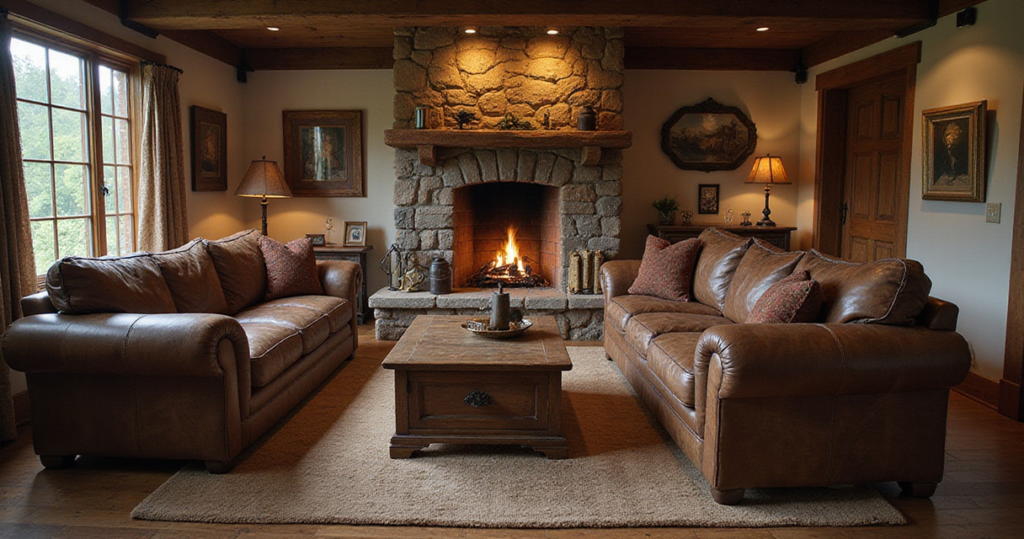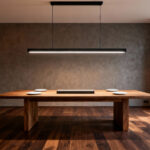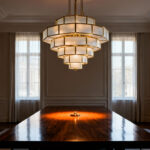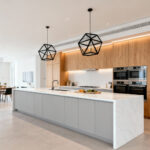Let’s get one thing straight. The pull you feel toward a rustic living room—that vision of a deep sofa, a warm stone fireplace, the rich grain of reclaimed wood—isn’t just about aesthetics. It’s not just a trend you saw on Pinterest.
As a designer with a background in psychology, I’ve spent years unpacking why certain spaces make us feel the way they do. And what I’ve learned is that rustic design speaks to something deep within us. It’s a quiet rebellion against the pristine, untouchable showroom and a full-on embrace of things that are real, textured, and have a story. It’s about creating a space that lowers your blood pressure the moment you walk in. Honestly, it’s a form of self-care.
But knowing you want that feeling and actually creating it are two different things. It can feel overwhelming. So, I’ve broken down the process into 24 secrets. Think of this less as a strict rulebook and more as a conversation about building a sanctuary, piece by piece.
1. Start with Furniture You Can Actually Live In
The soul of a rustic room isn’t in the tiny details; it’s in the big, foundational pieces. We’re talking about oversized, deep-seated furniture that you can truly sink into. These pieces are an invitation. They don’t just say “sit here,” they say “stay awhile, curl up, get comfortable.”
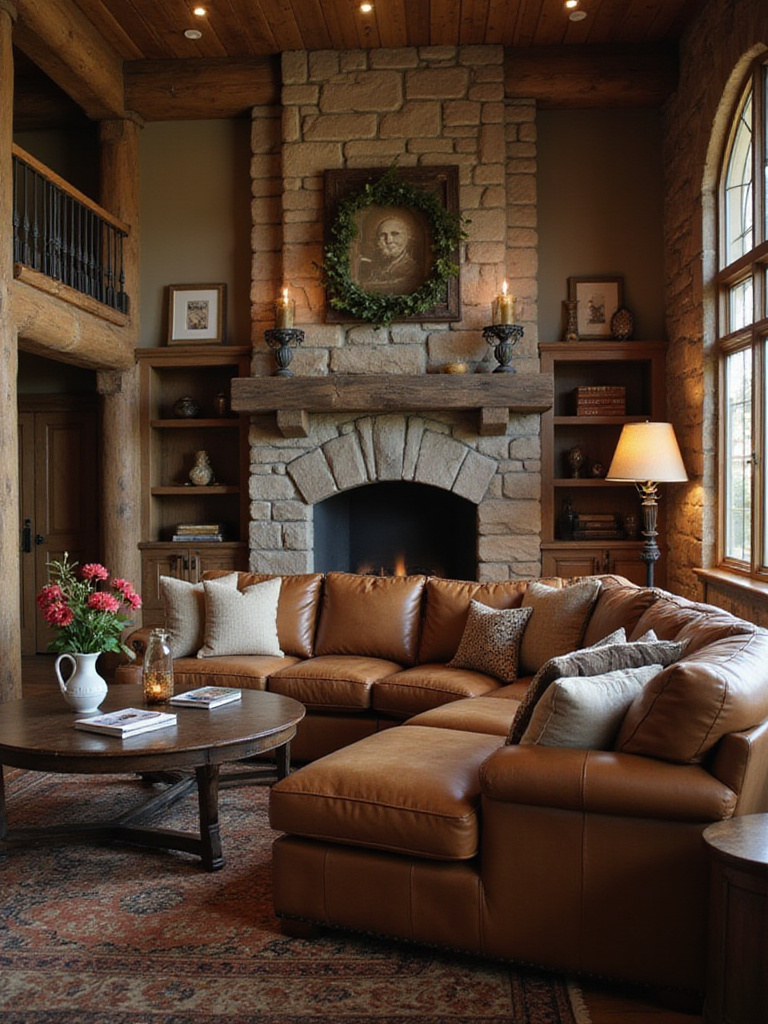
I once worked with a client who was terrified of a big, plush sectional. She thought it would swallow her living room. But the psychological effect was the exact opposite. When we finally brought it in, the room instantly felt more grounded and, surprisingly, more intimate. A huge, comfortable sofa signals safety and abundance to our brains. It’s a promise of comfort, a place where the whole family can pile on for movie night without anyone falling off the edge. This is furniture that’s meant for living—spills, naps, and all.
These foundational pieces are your anchor. They set the tone of comfort that everything else will build upon, starting with the very surfaces that surround you.
2. Surround Yourself with Natural Materials
Here’s where we get tactile. Reclaimed wood, real stone, and unpolished metals are the vocabulary of rustic design. And no, wood-look laminate and stone-veneer wallpaper don’t have the same effect. It’s not a snobbery thing; it’s a sensory one. Your psyche knows the difference between a real, solid slab of wood—with its unique grain and subtle scent—and something manufactured to look like it.
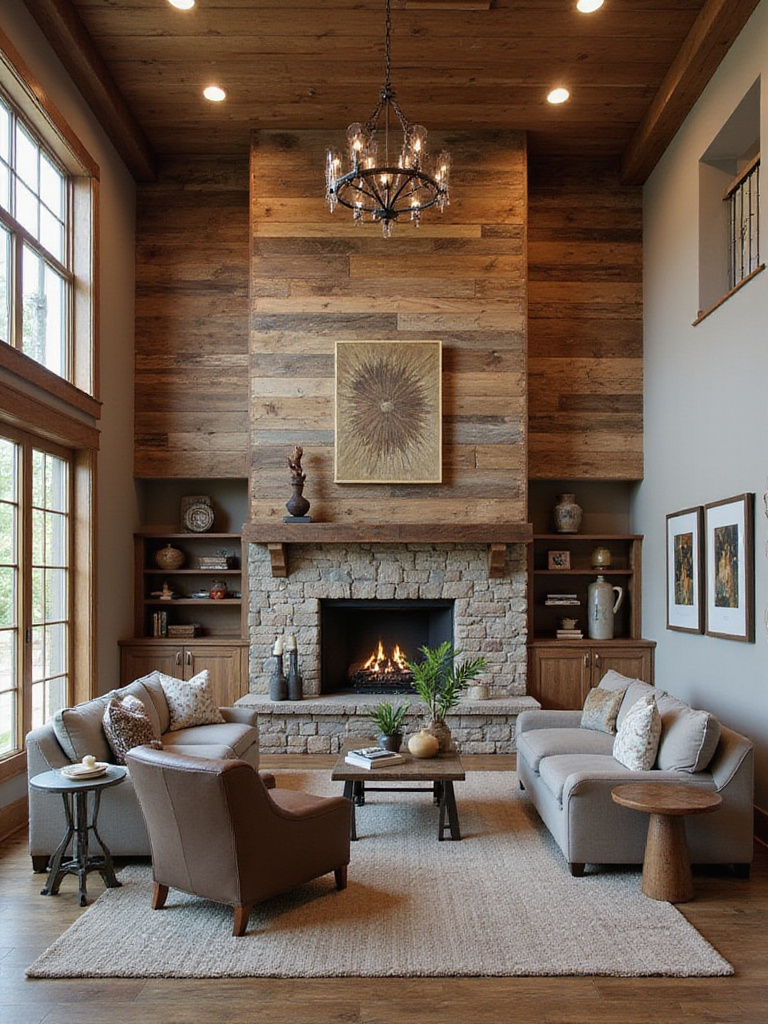
Our brains are wired for nature. It’s a concept called biophilia, this innate need to connect with the natural world. Bringing these elements indoors is a shortcut to tranquility. A weathered barn wood accent wall or a rugged stone hearth doesn’t just look good; it feels grounding. These materials have a history and a texture that invites you to touch them. They’re durable, yes, but more importantly, they are imperfect and honest.
That honesty in materials is what makes a space feel authentic. And that authenticity becomes the canvas for the next crucial layer: your color palette.
3. Choose a Color Palette That Feels Like a Warm Hug
Color is never just color. It’s emotion. It’s memory. For a rustic space, you want a palette that feels like coming home. We’re not talking about sterile greys or jarring brights. Think of the colors you’d find on a walk in the woods: warm creams, soft sage greens, the deep red of clay soil, and the charcoal of a cooled campfire. These hues are inherently calming.
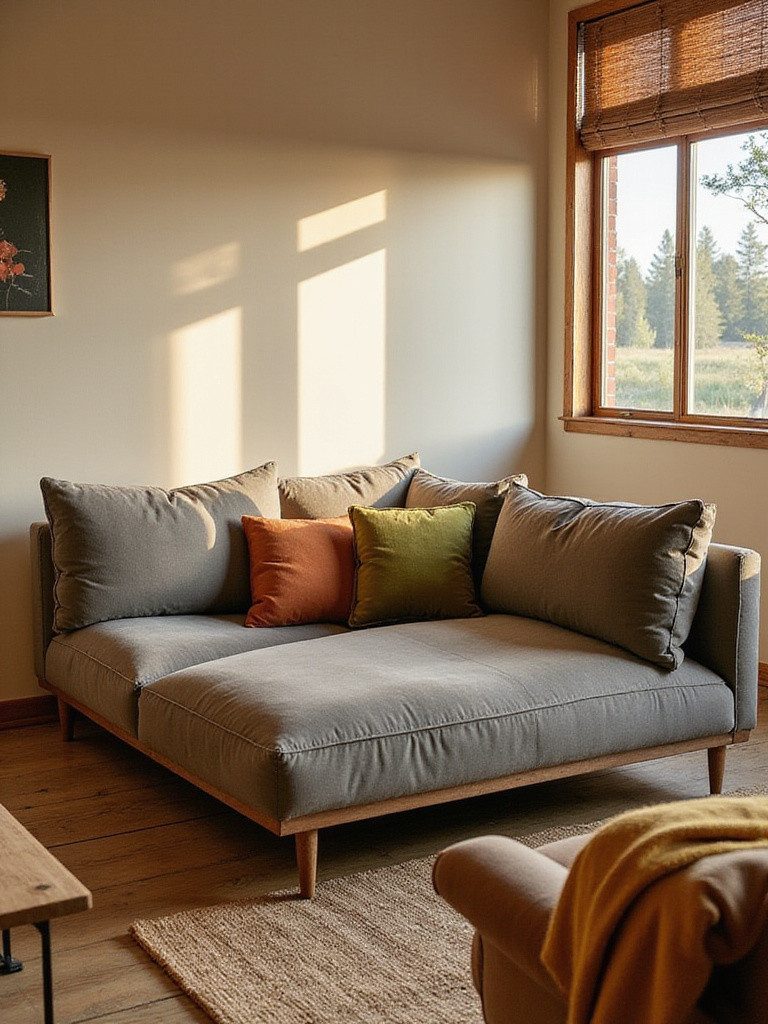
Here’s a little trick designers use: the 60-30-10 rule. It’s not a law, but it’s a great starting point if you’re feeling lost.
- 60% of your room should be a primary, calming neutral (like Benjamin Moore’s Swiss Coffee or Sherwin-Williams’ Accessible Beige). This is your walls, your sofa.
- 30% is a secondary, slightly deeper tone (like a muted olive or a rich caramel). Think accent chairs, curtains, or a large rug.
- 10% is your accent. This is where you bring in that pop of terracotta, a deep forest green, or a warm, rusty red in pillows, throws, or art.
But please, do me one favor: always, always test paint colors on your actual walls. The color on that tiny chip will look wildly different in the morning light of your living room than it does under the fluorescent glare of the hardware store. Trust me on this.
A well-chosen color story provides the perfect backdrop, allowing the character of the room’s most fundamental element—the floor—to truly shine.
4. Let Your Floors Tell a Story with Distressed Hardwood
Pristine, glossy floors have their place, but it’s not here. A distressed hardwood floor is the ultimate foundation for a rustic room. The scrapes, knots, and intentional imperfections aren’t flaws; they are character. They immediately signal that this is a space for living, not a museum. The best part? They are incredibly forgiving. A new scratch from moving furniture or a ding from a dropped toy just adds to the story.
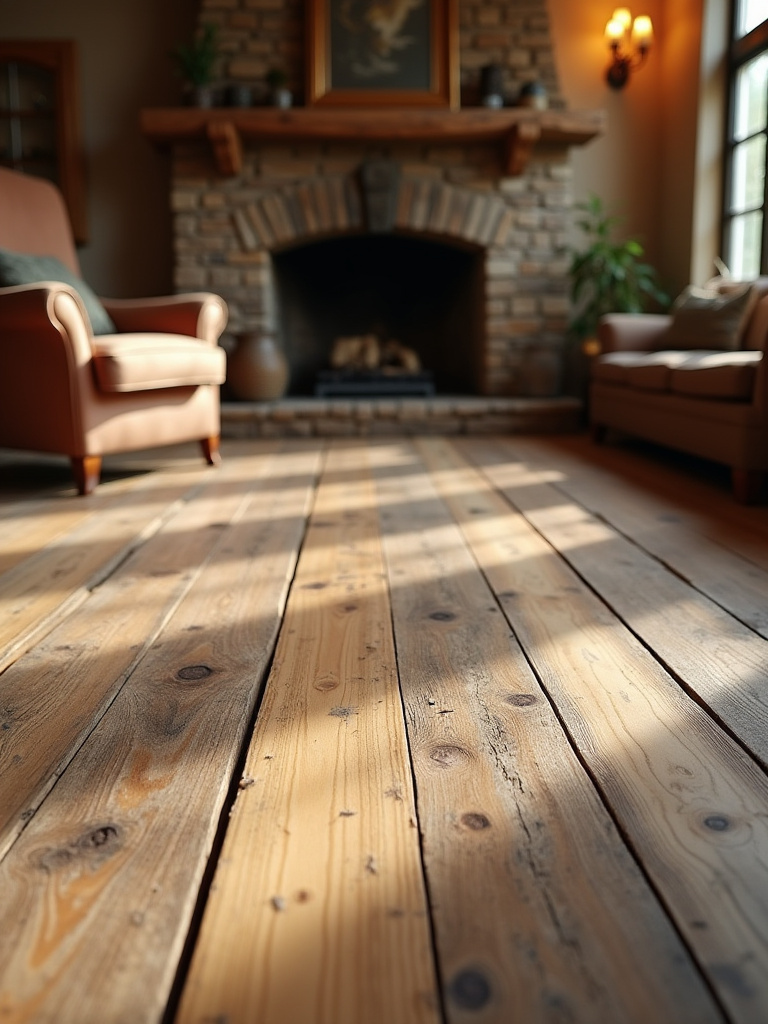
The psychological effect is powerful. A distressed floor feels like it’s been there for generations, grounding the entire home in a sense of history, even if the house is brand new. It makes everything else you put on it feel more authentic and settled.
When you’re looking, seek out hickory or oak with a low-sheen, oiled finish. The goal is to find something that looks genuinely weathered by time, not something that looks like it was chewed up by a machine. A little bit of texture goes a long way.
This solid, character-rich base is the perfect canvas. Now, let’s make it even cozier.
5. Layer Rugs for a “Designer” Touch of Warmth
Want to know a secret weapon for creating instant coziness and a professionally styled look? Layering your area rugs. Placing a single, lonely rug in the middle of a hardwood floor can sometimes feel like a postage stamp on a big envelope. Layering creates depth, texture, and intentionally defines a space.
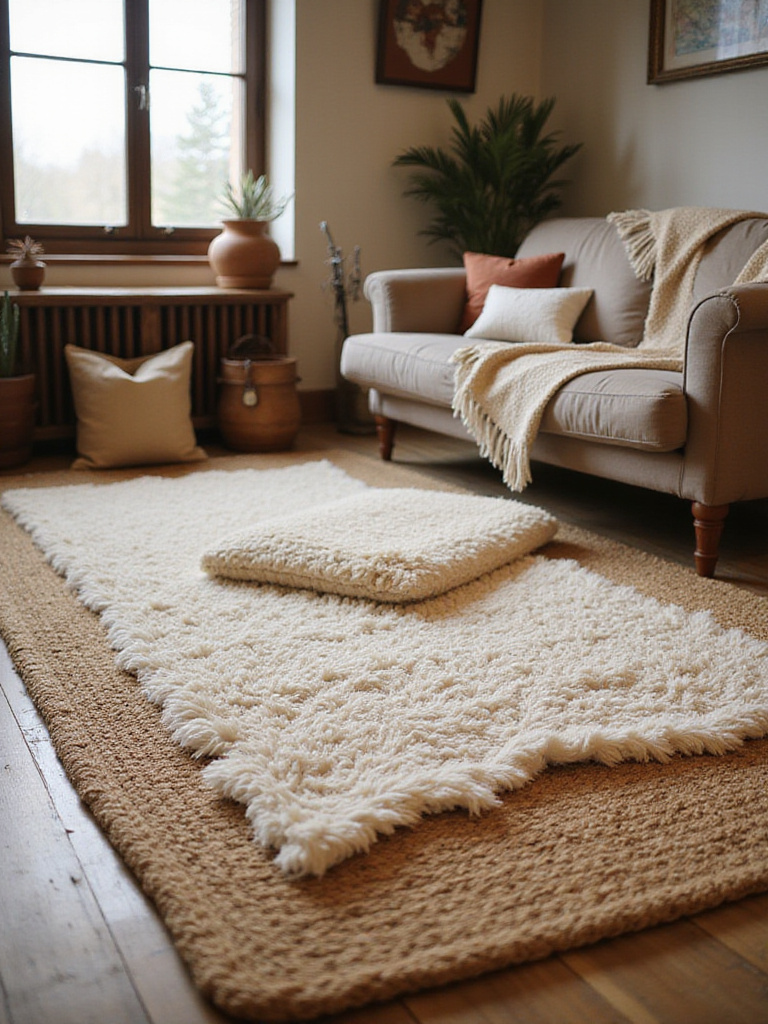
Think about starting with a large, durable base rug made of a natural fiber like jute or sisal. It provides great texture and covers a lot of ground. Then, layer a smaller, plusher rug on top—maybe a vintage-style wool rug or even a faux sheepskin. This smaller rug is where you can play with a bit more color or pattern. It instantly makes a seating area feel like its own little island of comfort.
This isn’t just about looks. It muffles sound, making a room feel more intimate. And from a psychological perspective, it clearly delineates the “relaxation zone” from the rest of the open-plan space, helping our brains switch off and unwind.
Once you’ve established this soft, inviting foundation, your eye will naturally be drawn to the room’s most commanding feature.
6. Make the Fireplace the Undisputed Heart of the Home
If a rustic living room has a heart, it’s the stone fireplace. It’s the anchor. It provides both literal warmth and a powerful psychological focal point that we’re primally drawn to. It’s a gathering spot, a storyteller, a source of light and comfort. A well-designed fireplace doesn’t just warm a room; it commands it.
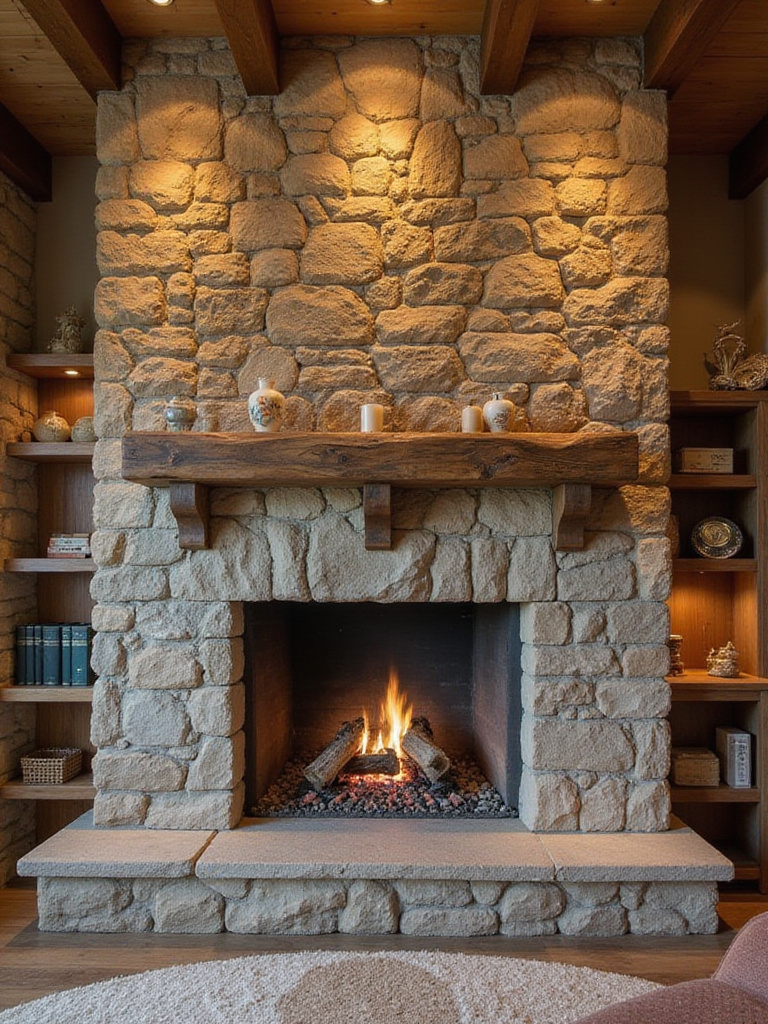
Scale is everything here. Don’t be afraid to go big. A floor-to-ceiling stone surround creates a dramatic presence that makes the whole room feel more substantial. Use a variety of stone shapes and sizes—like fieldstone or river rock—to mimic a natural rock face. An extended hearth can even double as extra seating when you have a full house.
Even when there’s no fire burning, the texture of the stone is a beautiful feature in itself. You can amplify this with some subtle uplighting from the floor or a pair of flanking sconces. It keeps the fireplace as the focal point, day or night.
The interplay of firelight and stonework creates a captivating dance of shadows, which leads us to think about the most important light source of all.
7. Let the Sunshine In with Minimal Window Treatments
Natural light is a non-negotiable ingredient in good design. It’s free, it boosts our mood, and it makes every color and texture in a room look better. In rustic design, the goal is to create a seamless connection between your cozy interior and the natural world outside. Heavy, ornate draperies block that connection.
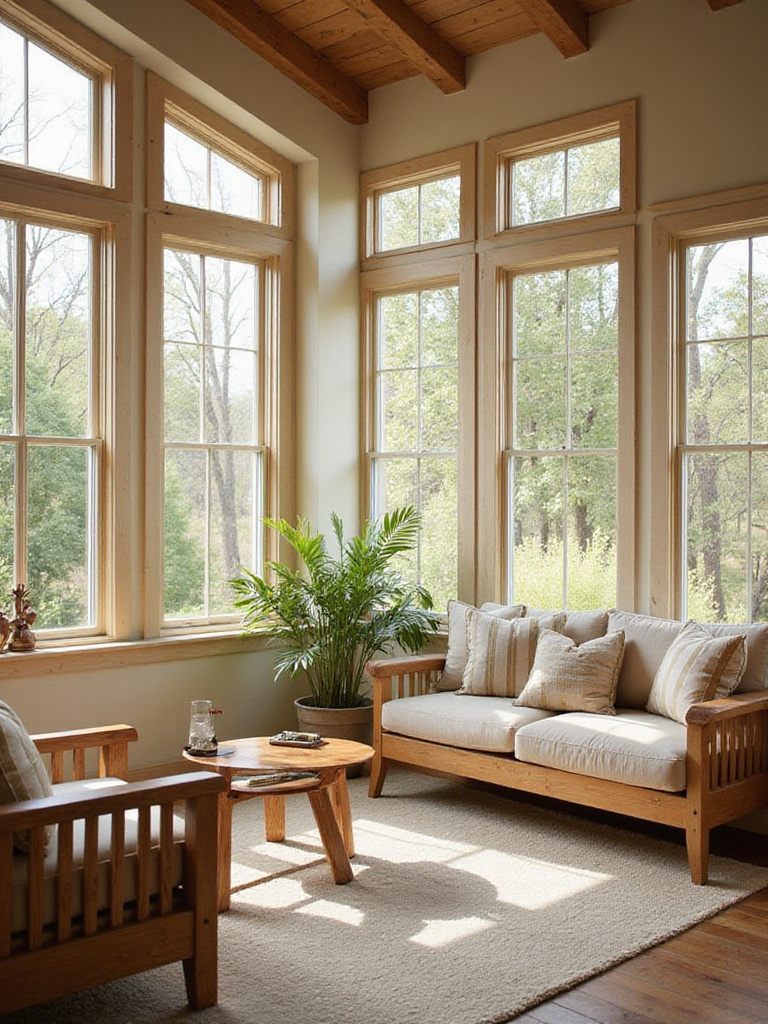
So, go minimal. Think simple linen panels that filter light beautifully, bamboo Roman shades that add another layer of natural texture, or top-down/bottom-up cellular shades that offer privacy without sacrificing daylight. The key is to keep it simple, functional, and in a neutral tone that doesn’t compete for attention. Pro tip: mount your curtain rod wider and higher than the window frame. This makes the window look bigger and allows you to pull the panels completely clear of the glass to let in maximum light.
Placing a mirror with a simple wood frame on the wall opposite your main window is another great trick. It will bounce light all around the room, making the space feel brighter and more expansive.
That glorious natural light sets the stage for the daytime, but extending that feeling of warmth into the evening requires a different kind of magic.
8. Layer in Warm, Inviting Artificial Light
When the sun goes down, your lighting choices determine whether your room feels like a cozy sanctuary or a sterile waiting room. The secret is warm, layered lighting. Wrought iron chandeliers, fixtures with exposed Edison bulbs, and lamps with textured shades all complement the rustic aesthetic perfectly.
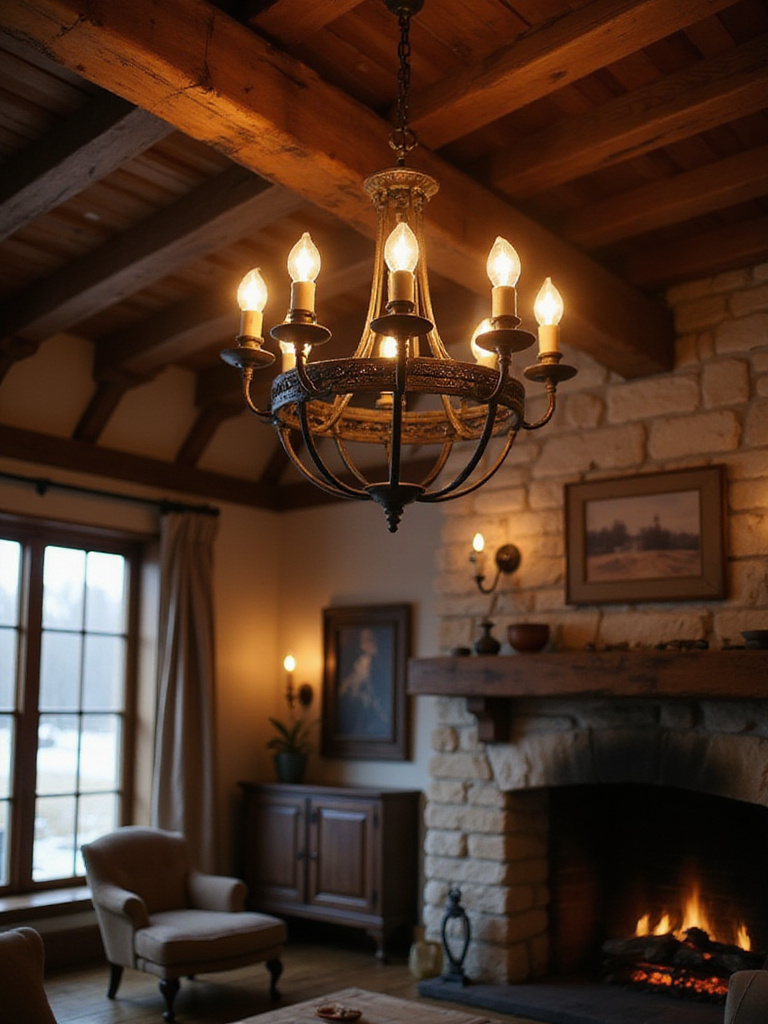
Here’s the technical bit, but it’s important: check the Kelvin temperature of your light bulbs. You’re looking for something in the 2200K-2700K range. This mimics the warm, amber glow of a flame and is what makes a space feel inviting and relaxing. Anything higher (like 4000K+) gives off that bluish, clinical light. And please, put everything on a dimmer. Being able to adjust the light level for reading, watching a movie, or having a quiet conversation is a total game-changer.
Don’t rely on just one overhead light. You need layers: a main ambient light source (like a chandelier), task lighting (like a reading lamp by a chair), and accent lighting (like a small lamp on a console table or a light pointed at your fireplace). This multi-level approach eliminates harsh shadows and creates a rich, enveloping glow.
This warm light accentuates texture, which brings us to the all-important textiles that truly make a room feel complete.
9. Get Touchy-Feely with Natural Textiles
If wood and stone are the bones of a rustic room, then textiles are its soft, comforting heart. They balance all those hard surfaces and invite you to touch and feel. We’re talking about durable, honest materials like wool, linen, canvas, and high-quality faux fur. These aren’t just for looks; wool is naturally temperature-regulating and flame-retardant, and linen gets softer and more beautiful with every wash.
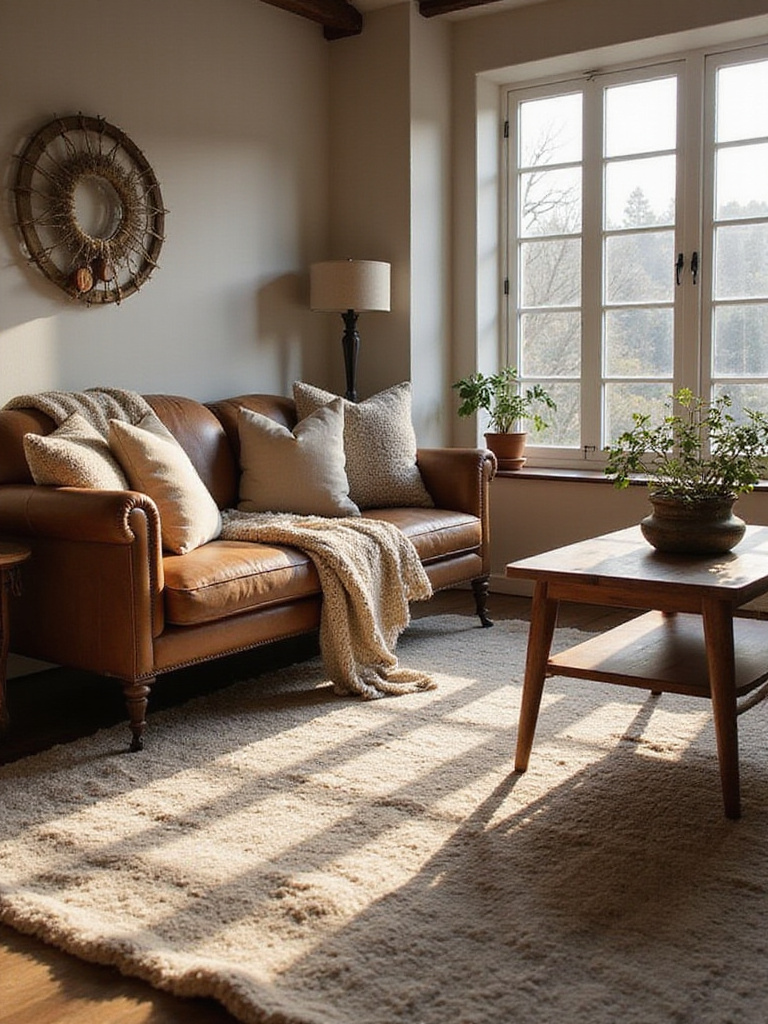
A great way to approach this is seasonally. In the winter, bring out the heavy wool throws, maybe a faux sheepskin rug, and some velvet pillow covers. The room will instantly feel cozier. In the summer, swap those for lighter linen throws and cotton cushion covers. It keeps the space from feeling static and makes your home feel more attuned to the world outside.
The variety of textures is what creates deep visual interest. Imagine a smooth leather armchair, a nubby wool blanket thrown over the arm, and a simple linen pillow tucked in the corner. Each texture plays off the others, creating a rich, sensory experience.
These textiles create the perfect backdrop for the art and objects that will truly tell your home’s story.
10. Curate Wall Art That Actually Means Something
Please don’t go to a big box store and buy a generic “rustic” canvas print of a faded barn. Wall art is an opportunity to inject your personality into the room. It should tell a story, spark a memory, or simply be something you genuinely love to look at. This is what transforms a decorated house into a real home.
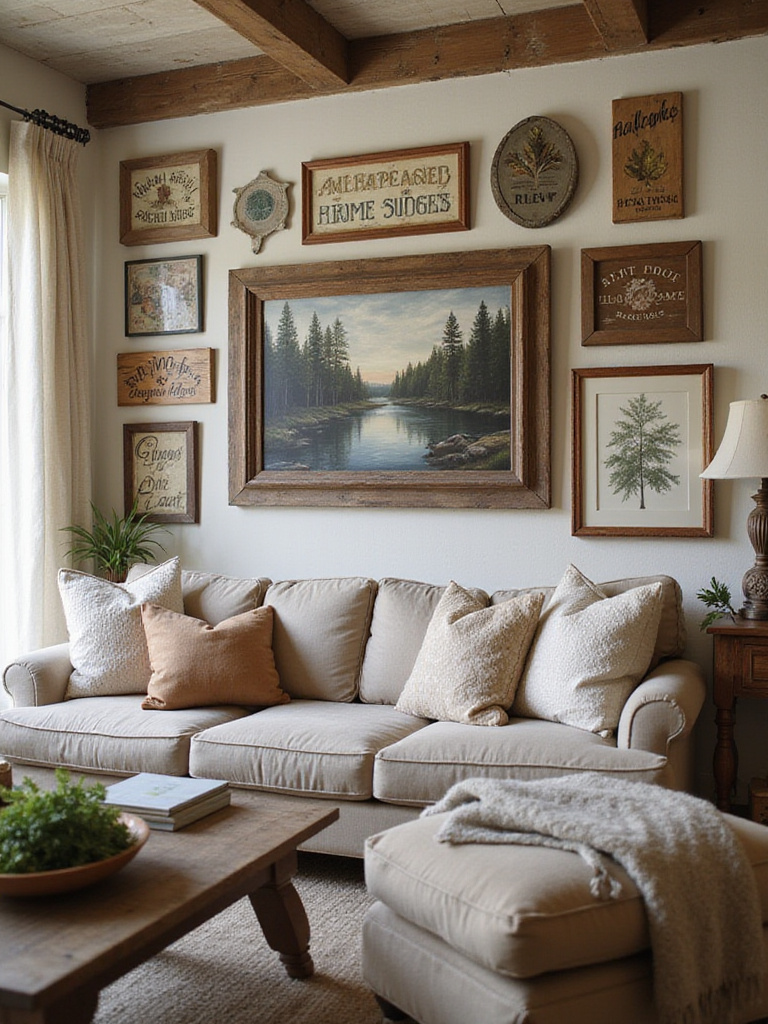
Think beyond framed prints. A collection of antique botanical illustrations, a beautifully woven textile hanging, a vintage map of a place you love, or a gallery wall of black-and-white family photos in mismatched wooden frames can be far more compelling. The key is to mix mediums and scales. A large canvas, a few smaller prints, and a three-dimensional object like a set of old keys can create a dynamic, interesting display.
I always tell my clients to choose pieces that they have a real connection to. That emotional warmth is something guests can feel, even if they don’t know the story behind it. It makes the space feel infinitely more welcoming.
The stories embedded in your art are a reflection of you, just as the very centerpiece of your living space should be a reflection of nature’s unique artistry.
11. Make a Statement with a Live-Edge Coffee Table
If you’re going to have one “wow” piece in a rustic living room, make it a live-edge coffee table. Crafted from a single slab of wood that preserves the natural, uneven edge of the tree, these tables are functional sculptures. Each one is completely unique—the grain, the knots, the specific curve of the edge tells the story of the tree it came from.
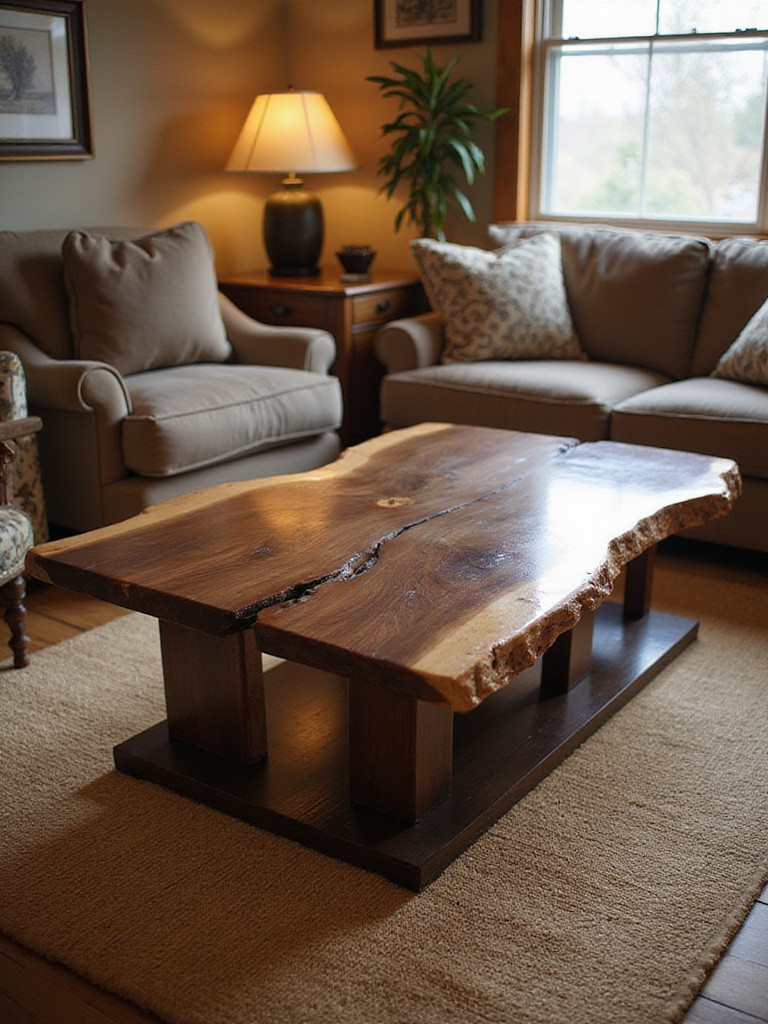
This isn’t just a table; it’s a conversation starter. People are naturally drawn to it. They want to run their hands over the wood and trace the lines of the grain. It brings a powerful, organic element right into the center of your main gathering space, constantly reminding you of the beauty of the natural world.
The contrast is what makes them so successful. Pairing that wild, organic wood slab with a simple, modern metal base creates a perfect balance of raw and refined. It’s a piece that feels both ancient and completely contemporary at the same time, a future family heirloom in the making.
This incredible centerpiece deserves seating that is equally inviting and built for real comfort.
12. Go Big with Plush, Oversized Seating
This might sound like a repeat of our first point, but it’s about drilling down into the feeling. We’re talking about deep-seated sofas (look for seat depths of 24 inches or more) and armchairs you can curl up in, feet and all. This is not the place for delicate, upright settees. Plush seating sends an immediate, non-verbal signal to your body: “It’s okay to relax here. Let go.”
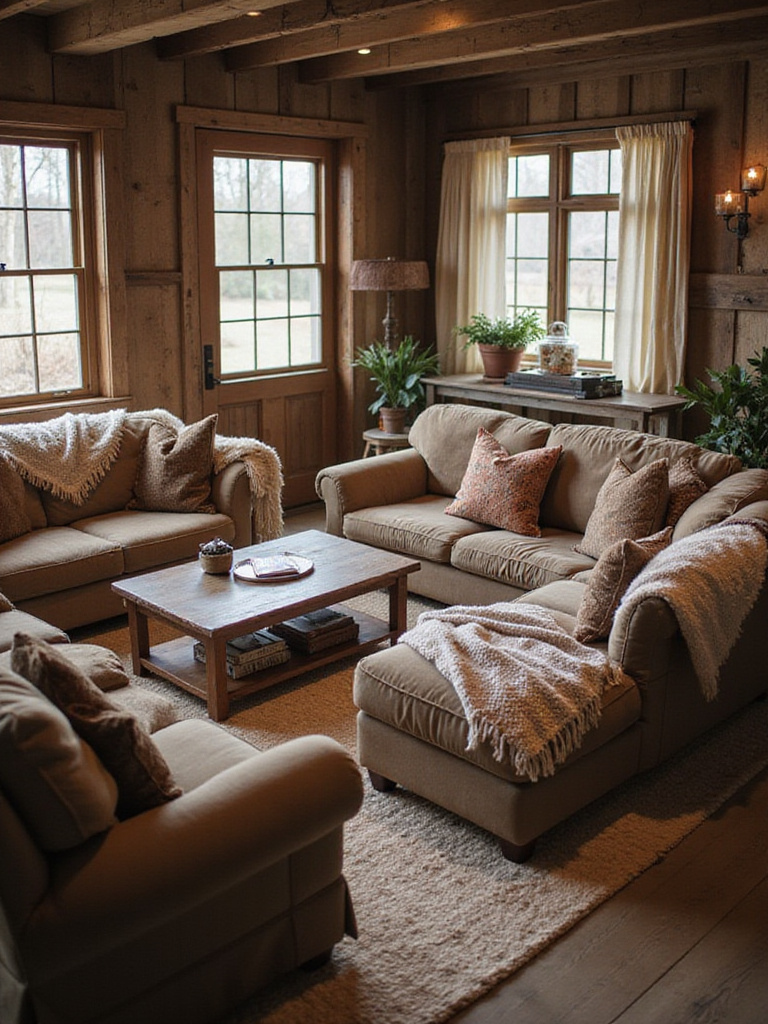
Visually, these substantial pieces anchor the room and communicate a sense of luxury and permanence. Don’t skimp on quality here. A solid hardwood frame and high-density foam or down-blend cushions will not only feel better but will hold up for years, often looking better as the material develops a lived-in patina.
Think about materials that get better with age. Distressed leather warms up and softens, heavy linen relaxes and gets cozier, and a good quality performance velvet can be surprisingly durable. This is seating designed for sprawling, for long conversations, for life.
And once you have that perfect, sink-in sofa, you need the ultimate accessory for coziness.
13. Add an Irresistibly Chunky Knit Throw
There is almost nothing that says “cozy” more effectively than a chunky knit throw. These oversized, super-tactile blankets are pure sensory delight. Draped over the back of a sofa or the arm of a chair, they add a layer of visual weight and an undeniable invitation to get comfortable.
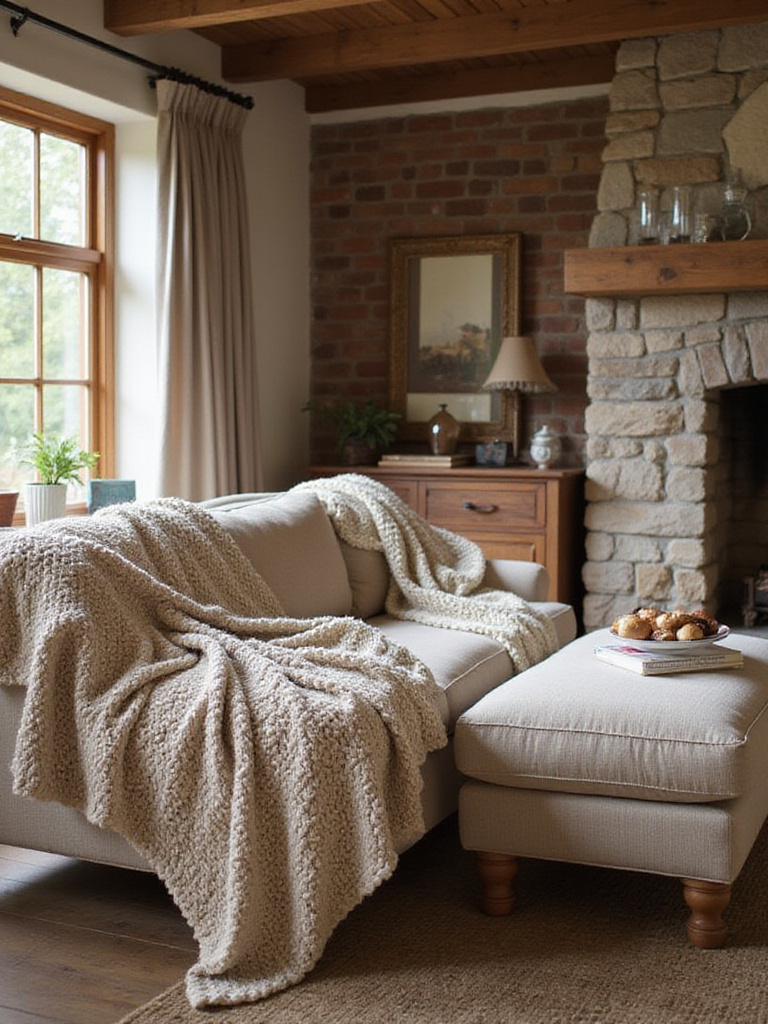
From a psychological standpoint, the feeling of being enveloped in something soft and heavy is deeply calming. It’s like a gentle hug, triggering a relaxation response and making your space feel like a true nest. Merino wool is incredibly soft and luxurious, but cotton or chenille versions can be just as effective and a bit more practical.
You don’t need to fold it perfectly. In fact, it looks better when it’s casually draped or artfully puddled in a basket nearby. This adds to that authentic, “lived-in” feeling we’re aiming for. It’s a simple addition that has a massive impact on the overall coziness factor.
That single, substantial texture provides a wonderful contrast to smaller, more varied comfort elements.
14. Scatter Pillows with Texture and Muted Tones
If a chunky throw is the main course of coziness, decorative pillows are the delicious side dishes. They are the easiest and most affordable way to add layers of color, pattern, and, most importantly, texture. A sofa with no pillows looks stark and uninviting. A few well-chosen pillows can make it look like a cloud.
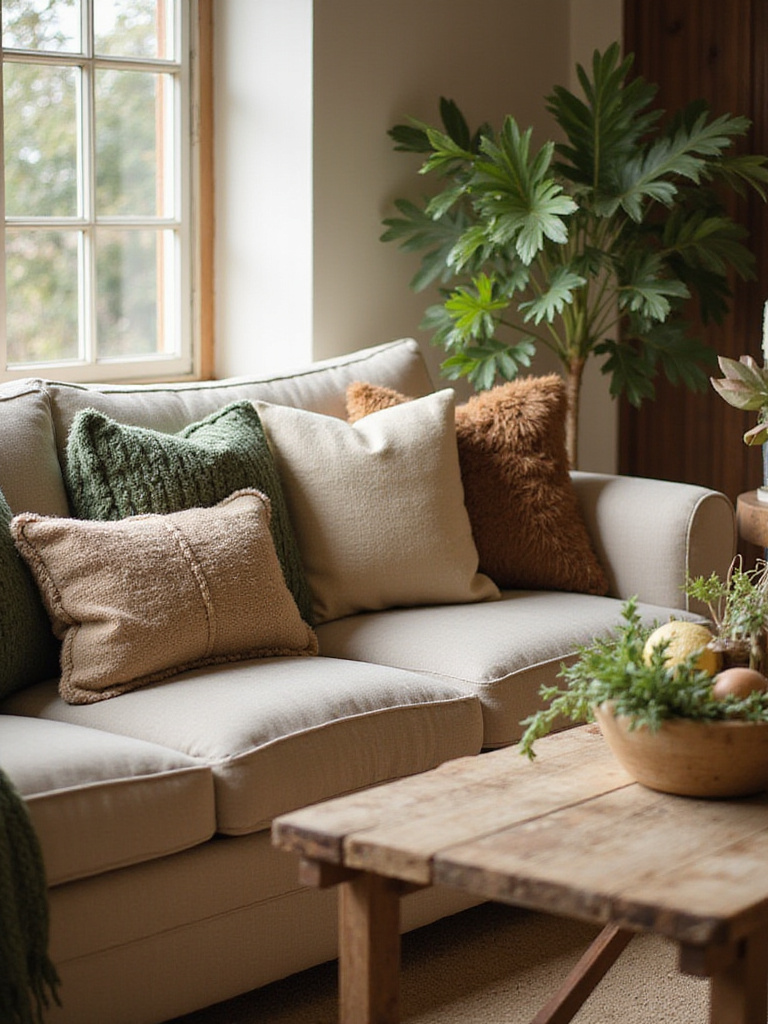
Forget matching sets. The key is to mix, not match. Aim for a variety of textures: a smooth linen, a nubby woven wool, a soft faux fur, maybe even a touch of leather. This creates a rich, tactile landscape. Stick to your established earthy color palette but play with different shades and subtle patterns like a muted plaid, a simple stripe, or a delicate botanical print. A good rule of thumb is to use an odd number of pillows—three or five—for a more natural, less rigid look.
And think beyond looks! A good-quality down or down-alternative insert will make your pillows feel as good as they look, holding their shape and providing real comfort instead of just being decorative lumps.
This layering of soft textures creates visual balance, which is complemented by practical elements that keep the serenity of the space intact.
15. Hide Your Clutter in Plain Sight with Woven Baskets
Clutter is the enemy of calm. But in a living room, life happens. You need a place for blankets, remote controls, magazines, and kids’ toys. The rustic solution is as beautiful as it is practical: natural woven baskets. Made from materials like seagrass, jute, or rattan, they add yet another layer of organic texture while elegantly concealing your stuff.
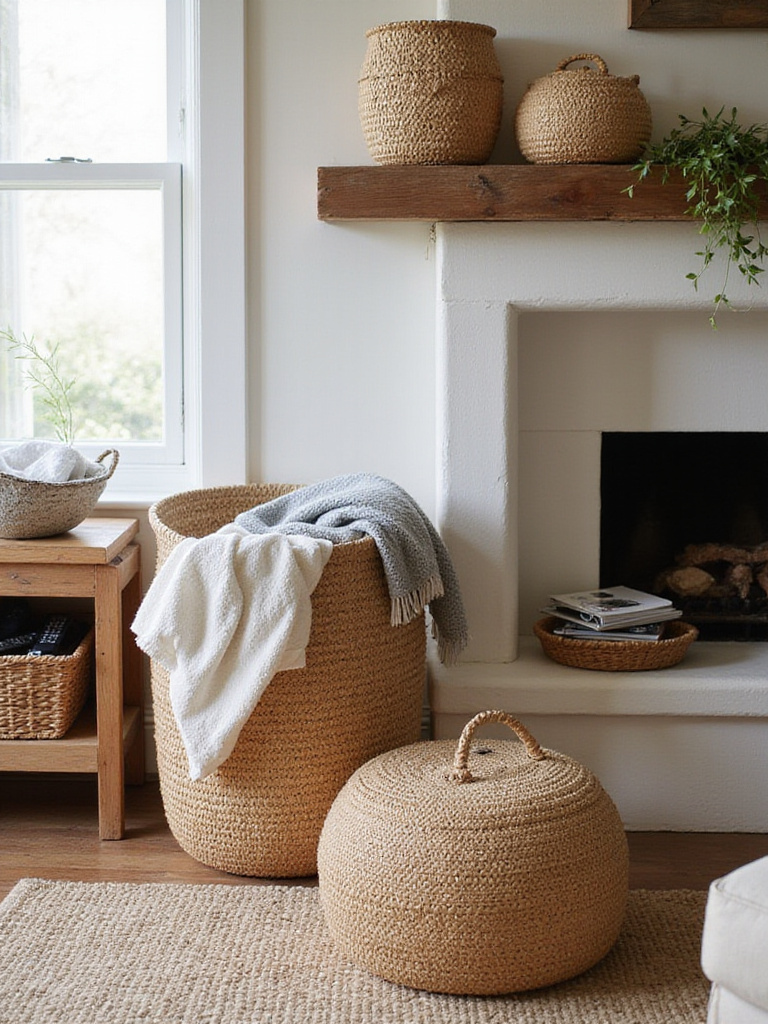
This is a classic form-meets-function scenario. A large floor basket next to the fireplace can hold firewood or extra throws. A medium-sized one tucked beside the sofa can wrangle magazines and tablets. A few smaller ones on a bookshelf can organize smaller odds and ends. They bring warmth and texture to every corner of the room while being an absolute lifesaver for a quick 5-minute tidy-up.
Unlike plastic bins, these baskets become part of the decor. Their natural, varied textures complement the wood and stone, softening the hard edges and reinforcing the connection to nature throughout the space.
These baskets add character, but for a truly unique space, you need pieces with even more history.
16. Give Old Wood a New Life
There’s a special kind of magic in repurposed wooden elements. Taking something old, discarded, and full of history and giving it a new purpose in your home creates a story that no new piece of furniture can ever tell. An old paneled door from a salvage yard mounted on a barn-style track becomes a stunning room divider. A stack of vintage wooden crates becomes a unique side table.
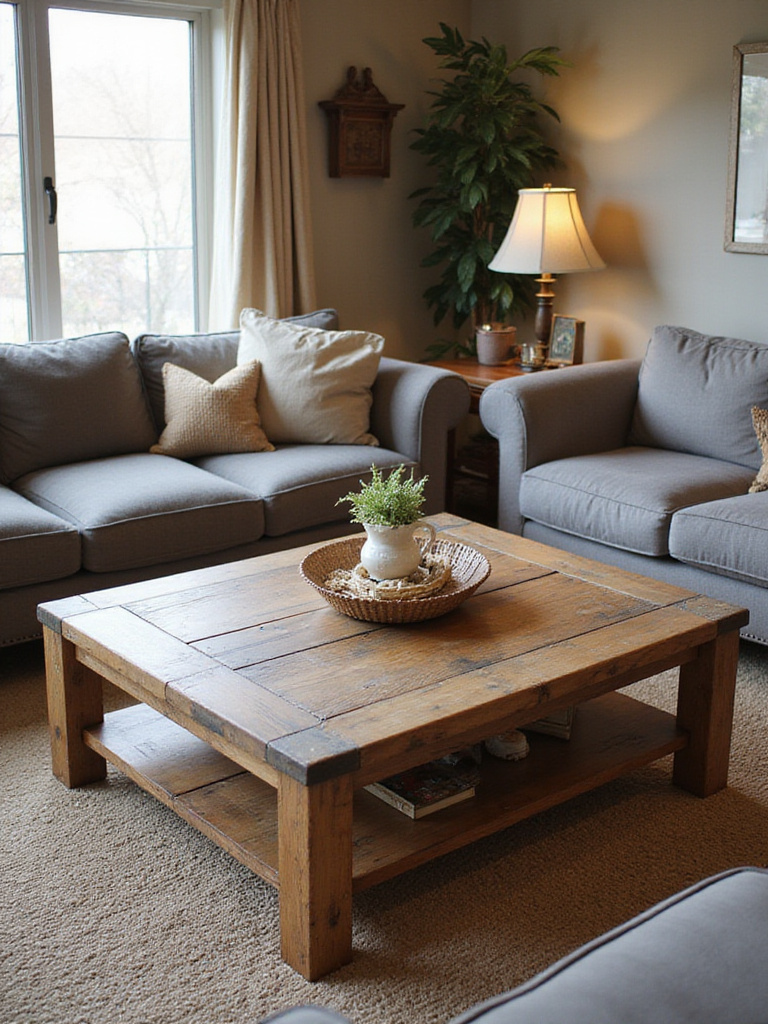
This isn’t just about being budget-friendly or sustainable, though it’s great for both. It’s about instant authenticity. The patina, the dings, the faded paint on a repurposed piece carry the soul of its past life. It immediately makes a room feel layered and personal, as if it has evolved over time.
You have to look at old things with new eyes. Could that rickety old ladder become a leaning bookshelf for throws and magazines? Could those weathered shutters be mounted on a wall as architectural art? This is where your creativity can really shine.
The journey of transforming a found object mirrors the process of bringing life into your home in a more literal sense.
17. Bring the Outdoors In with Plants
A rustic room without plants feels like it’s missing its final breath of life. Greenery is the element that softens all the hard edges of wood and stone and literally improves the air you breathe. I’ve seen the data, but you can just feel it: being around plants reduces stress and makes a space feel more vibrant and healthy.
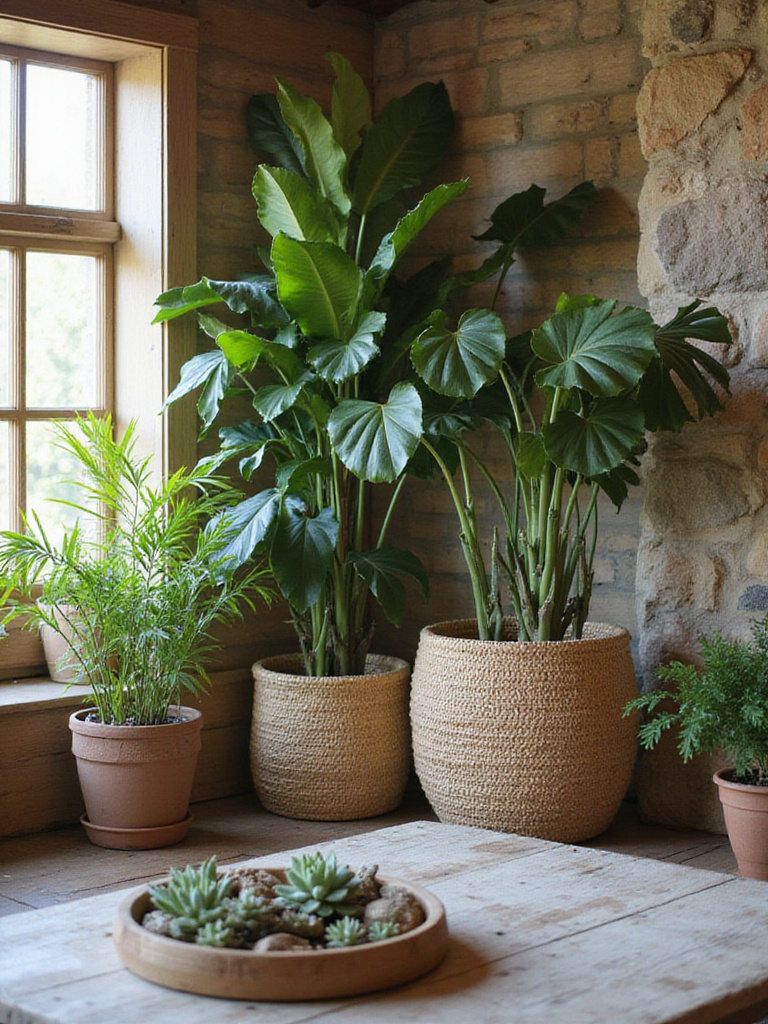
The trick is to choose the right plant for the right spot. Don’t fight nature. If you have a dim corner, get a ZZ plant or a snake plant that thrives in low light. If you have a bright window, a fiddle leaf fig or a bird of paradise will be happy there. And put them in planters that match your aesthetic—terracotta pots, woven baskets, or even weathered wood containers.
Vary the shapes and sizes. A tall, upright plant in one corner, a bushy one on a side table, and a trailing plant hanging from the ceiling or cascading down a bookshelf creates a layered, natural look, much like a real landscape. The organic shapes of the leaves are the perfect antidote to the straight lines of architecture and furniture.
The changing light on these living elements creates a dynamic environment, perfect for showcasing the unique personal treasures that make a space truly yours.
18. Display Your History with Found Objects & Antiques
This is about curating your life. Those objects you’ve collected over time—whether they’re family heirlooms, flea market treasures, or “found objects” from a walk on the beach—are the soul of your home. A rustic living room is the perfect backdrop to display them with purpose. A collection of antique pewter pitchers on a mantel, a weathered farm tool mounted on the wall, or your grandfather’s old camera on a bookshelf adds layers of personality that money can’t buy.
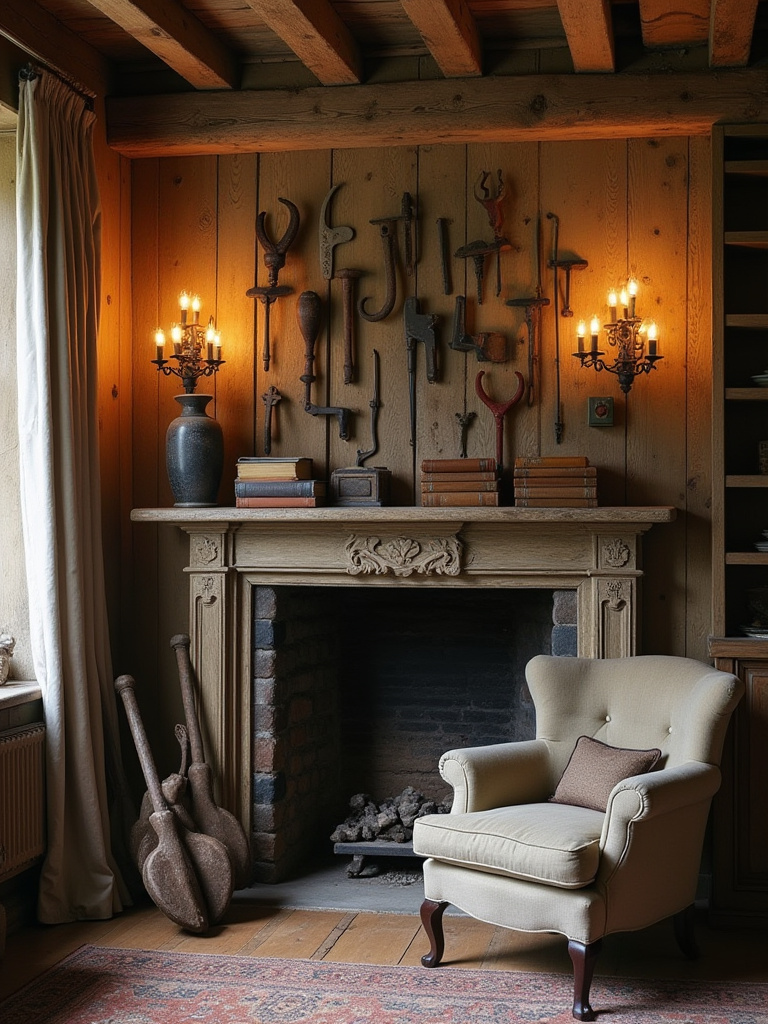
But here’s the key: it’s about curation, not clutter. You don’t need to display everything at once. Choose the pieces that have the best stories or the most interesting shapes. Group them in odd numbers (three or five items together usually looks best) and vary their heights and textures.
Let these pieces breathe. A single, beautiful antique bowl on a coffee table can have more impact than a shelf crowded with knick-knacks. These are the items that make your home uniquely yours.
The story told by these personal artifacts is echoed in the very bones of the room.
19. Look Up: Add Character with Beams or Paneling
Nothing says “rustic” quite like exposed wooden beams. They provide an architectural weight and rhythm that draws the eye upward, making a room feel both grander and cozier at the same time. They add a sense of history and permanence, as if the home was built with old-world craftsmanship.
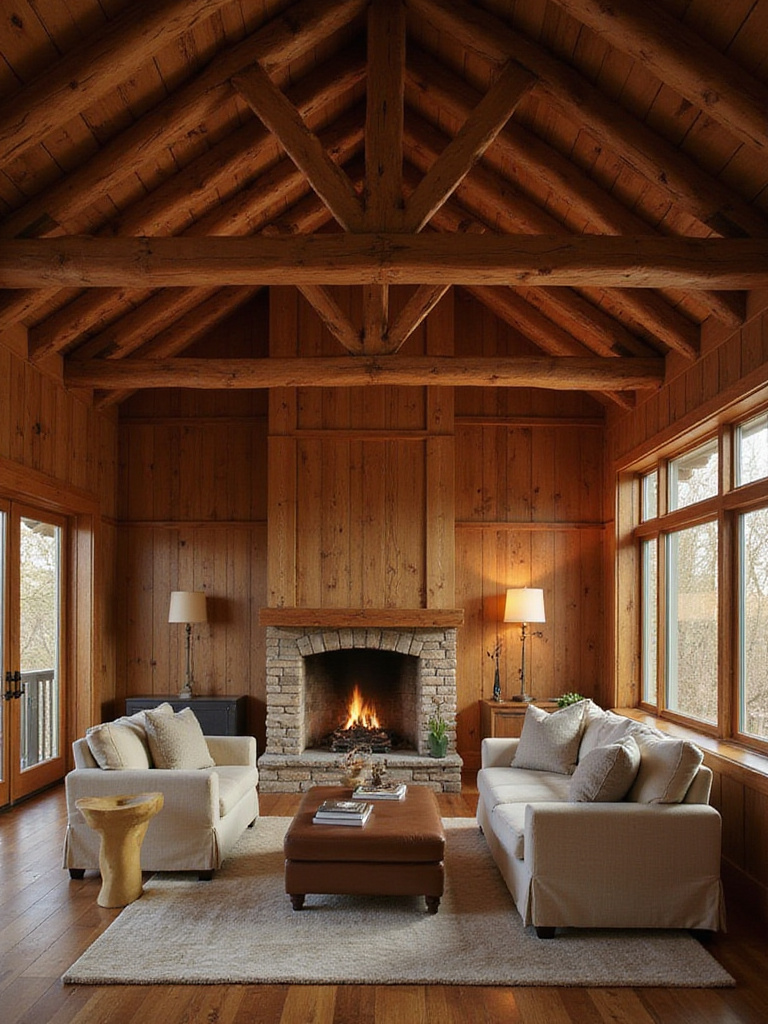
If your home wasn’t blessed with original beams, high-quality faux beams made from lightweight material or wrapping existing structural elements in reclaimed timber can achieve a nearly identical look and feel. The important thing is getting the scale right. Beams that are too small will look timid and out of place, while beams that are too bulky can overwhelm a room with low ceilings. It’s a delicate balance.
Wood paneling, like classic shiplap or a more traditional board-and-batten wainscoting, is another fantastic way to add texture and architectural interest. It breaks up a flat, boring wall and adds an extra layer of warmth and acoustic comfort, making a large room feel more intimate.
This strong architectural framework provides the perfect structure to carve out a smaller, more personal retreat within the larger space.
20. Carve Out a Cozy Reading Nook
In our hyper-connected world, having a dedicated space to unplug is the ultimate luxury. Even a small, underutilized corner can be transformed into an intimate reading nook sanctuary. This isn’t just about using space efficiently; it’s about intentionally designing a spot for quiet and decompression.
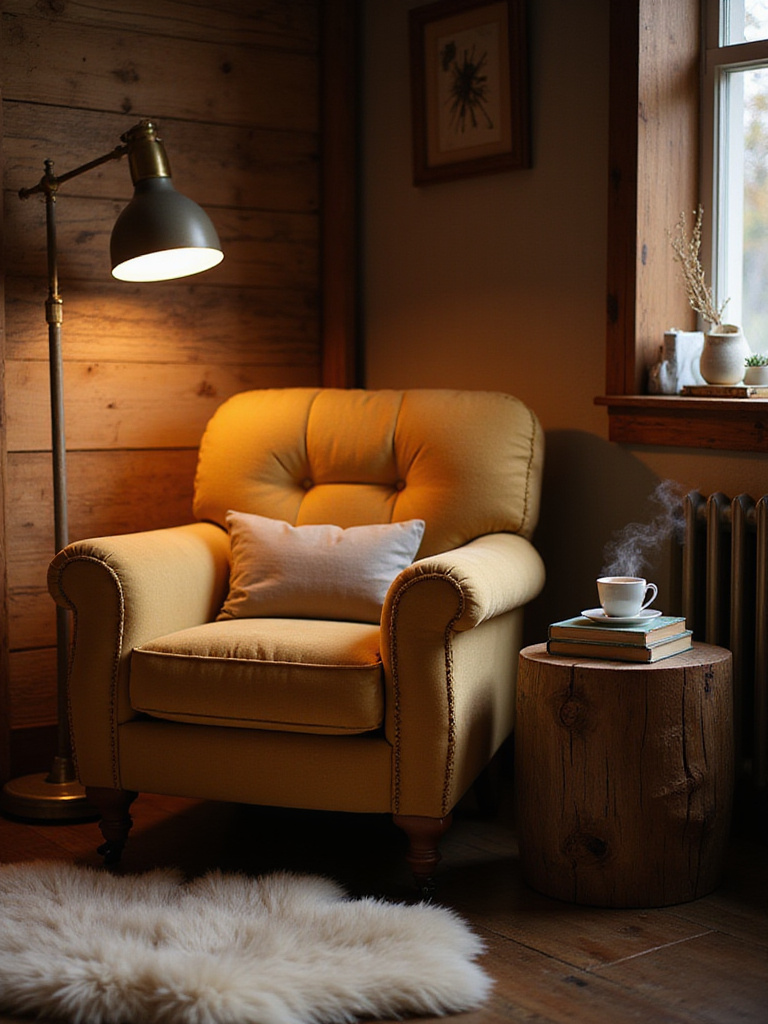
All you need is a comfortable chair—maybe a deep armchair with a soft slipcover or even a built-in window seat piled high with cushions. Add a small table for a cup of tea, a good task light for reading after dark, and a basket nearby to hold your current book and a cozy throw. That’s it.
By creating a designated “zone for quiet,” you give your brain a powerful cue to slow down and relax. It becomes a personal retreat that beckons you to take a few moments for yourself each day.
The personal nature of a reading nook is about a mood, a feeling that can be enhanced by incorporating items with even deeper personal history.
21. Personalize with Meaningful Family Heirlooms
This goes beyond just displaying antiques; this is about weaving your own family’s story into the fabric of your home. That rocking chair your grandmother used, your father’s old toolbox repurposed as a storage chest, a handmade quilt now used as a wall hanging—these pieces are irreplaceable. They radiate an emotional warmth that connects your present to your past.
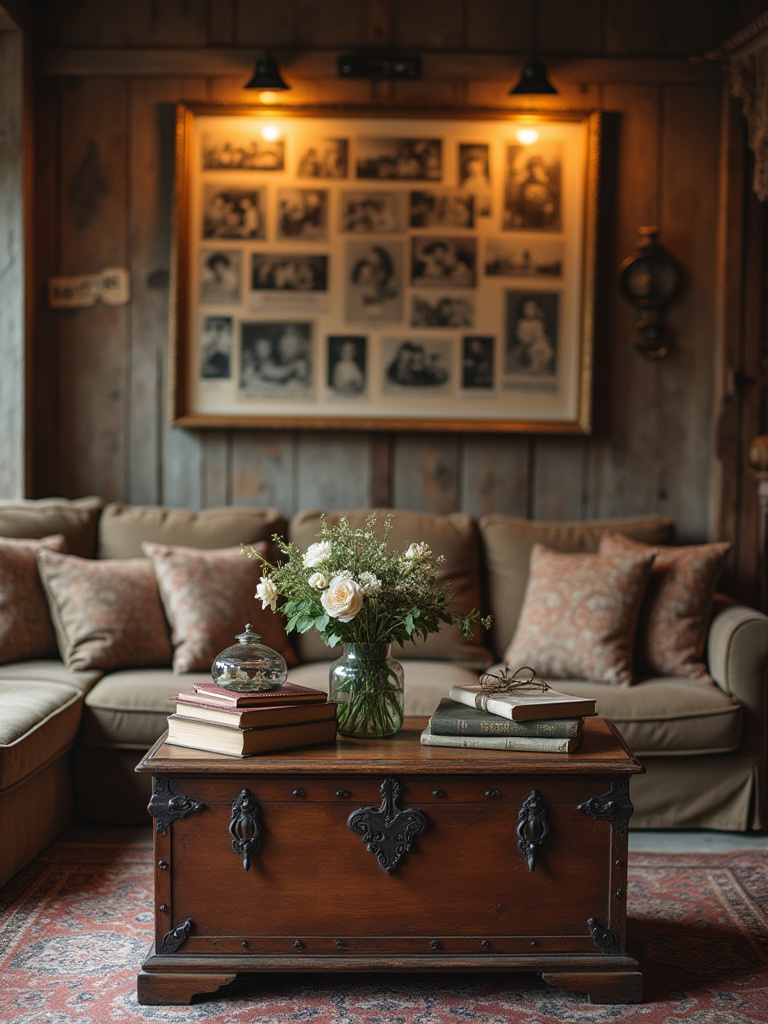
Don’t be afraid to give them a place of honor. And don’t worry if they don’t “match” perfectly. The personal significance of an heirloom transcends any strict design rule. A beautifully restored antique chest can absolutely work as a coffee table in a modern rustic setting. In fact, that contrast is often what makes it so special.
The trick is to integrate them naturally. Scatter them throughout the space rather than grouping them all in one “heirloom corner.” This allows their story to become a cohesive part of your home’s overall narrative, not a separate museum exhibit.
These pieces, rich with history and love, are the heart of creating a space that feels genuinely lived-in.
22. Embrace the Beauty of a “Lived-In” Feel
This might be the most important secret of all. A truly rustic space is not perfect. It’s not a sterile, perfectly staged photo. It’s a home that embraces the beautiful mess of everyday life. It’s about letting go of the pressure for perfection and allowing your space to feel genuinely inhabited.
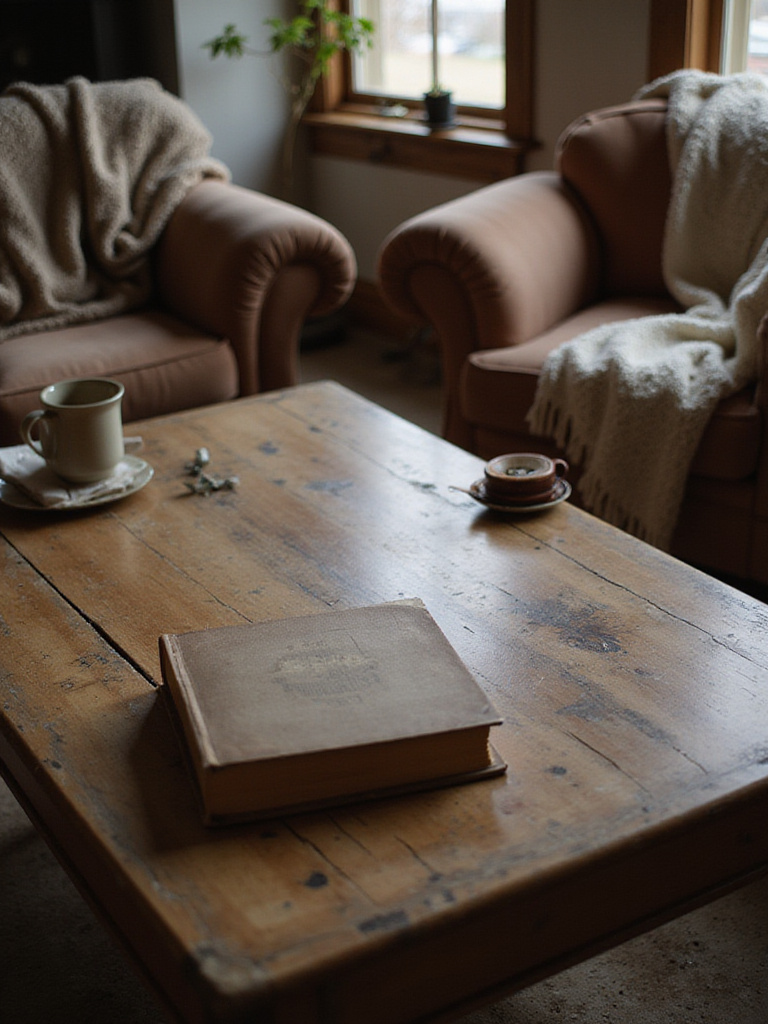
So, let the throw blanket stay draped over the sofa arm where you left it. Let a small stack of your favorite books sit on the side table. Embrace the patina that develops on the leather armchair where you always sit. These aren’t signs of messiness; they’re signs of life. They are what make a space feel warm, welcoming, and real.
Frankly, there is nothing less relaxing than a room where you’re afraid to put your feet up. The goal is to create a backdrop for your life, not a stage set. When guests come over, this relaxed atmosphere gives them permission to relax, too.
Achieving this lived-in look is often about finding unique pieces with existing character, which doesn’t have to break the bank.
23. Hunt for Treasures at Thrift Stores and Flea Markets
You can find some of the most authentic and interesting pieces for your rustic living room for a fraction of the price of new items if you’re willing to do a little hunting. Thrift stores, estate sales, and flea markets are gold mines for items with built-in character. A solid wood side table that just needs a little wax, a set of vintage stoneware mugs, a mirror with a beautifully aged frame—these finds ensure your space is truly one-of-a-kind.
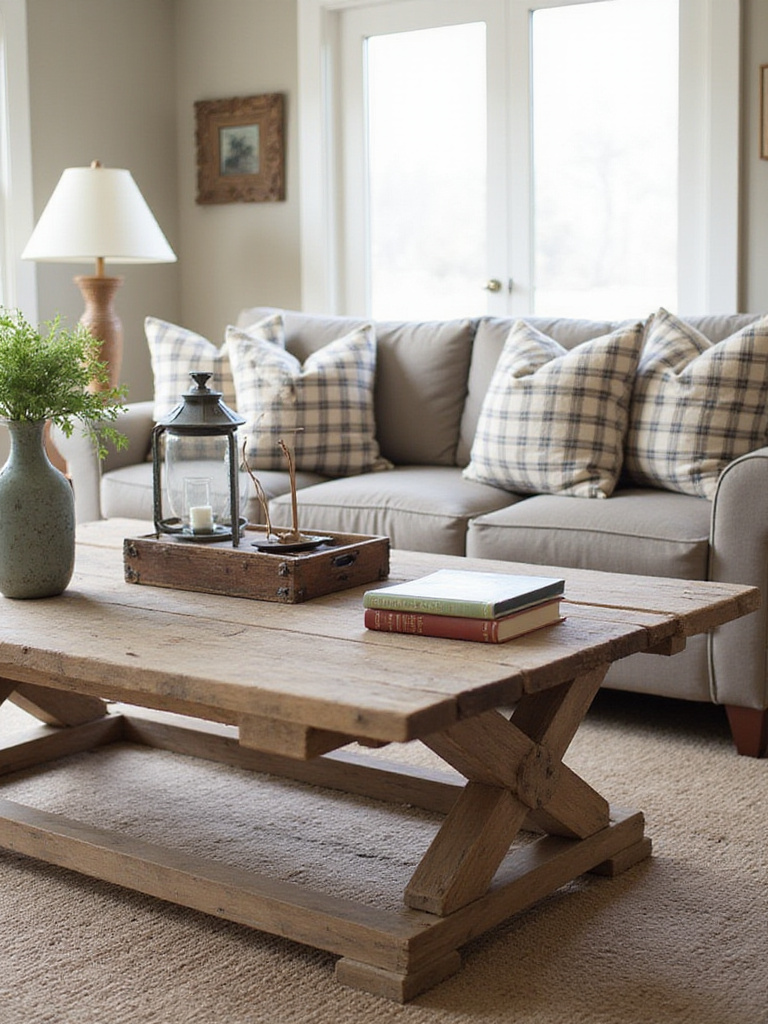
The trick is to go in with a plan. Know what you’re looking for—a small bookshelf, a set of lamps, interesting wooden bowls—so you don’t get overwhelmed. Look for good bones: solid wood construction, interesting shapes, and potential. A little surface wear is good; it adds to the charm. Structural damage or a musty smell is a red flag.
This is the slow-decorating approach. You build your room over time with pieces that you discover and love. It’s more rewarding and results in a space that feels infinitely more personal than one bought out of a catalog in a single weekend.
This mix of new, old, and found items is what leads to our final, and perhaps most sophisticated, design principle.
24. Master the High-Low Mix of Raw and Refined
The real magic, the thing that elevates a rustic room from simply “country” to “sophisticated rustic,” is the artful balance between raw and refined elements. It’s all about creating a beautiful tension between opposites. If everything is rough-hewn and rugged, a room can feel like a log cabin cliché. If everything is too soft and polished, it loses its rustic soul.
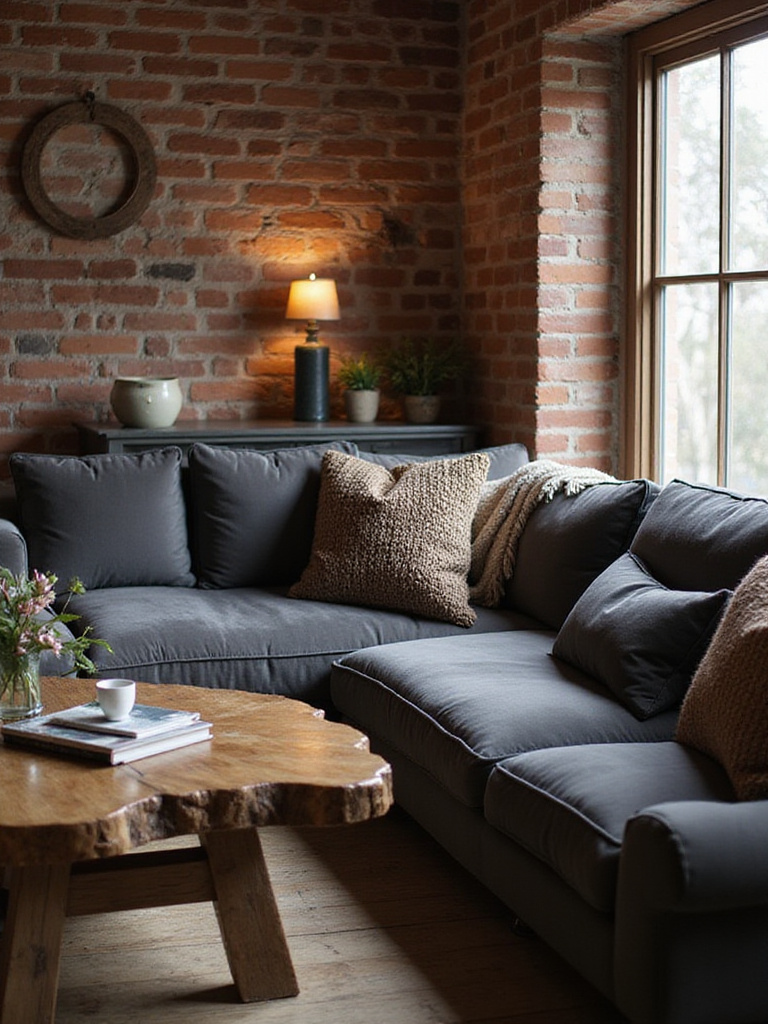
Here’s how to think about it. Pair a rough, reclaimed wood coffee table with a soft, plush velvet sofa. Balance a rugged stone fireplace with delicate, sheer linen curtains. Contrast chunky, hand-thrown pottery with sleek, modern metal lamp bases. It’s this high-low mix that creates visual interest and keeps the eye moving.
Start with your big, raw elements—the stone, the beams, the distressed floors—and then intentionally layer in touches of refinement. A little silk, a little velvet, a touch of polished metal. This harmony is what creates a space that feels both grounded and elegant, comfortable and chic.
Your Home Should Tell Your Story
Ultimately, creating a rustic living room is a journey, not a destination. It’s about making intentional choices that layer comfort, history, and personality. It starts with a big decision, like a sofa, and builds with every pillow, plant, and treasured object you add.
The incredible thing I’ve seen over and over is how these design choices genuinely impact our well-being. The earthy colors, natural textures, and embrace of imperfection tap into a deep-seated human need for a space that feels safe, grounding, and authentic. You’re not just decorating; you’re creating a sanctuary that supports real life.
So trust your instincts. Start small. Add one thing that feels right. Because the most beautiful and comforting rustic spaces aren’t the ones that follow every rule, but the ones that beautifully reflect the authentic, imperfect lives being lived within them.
